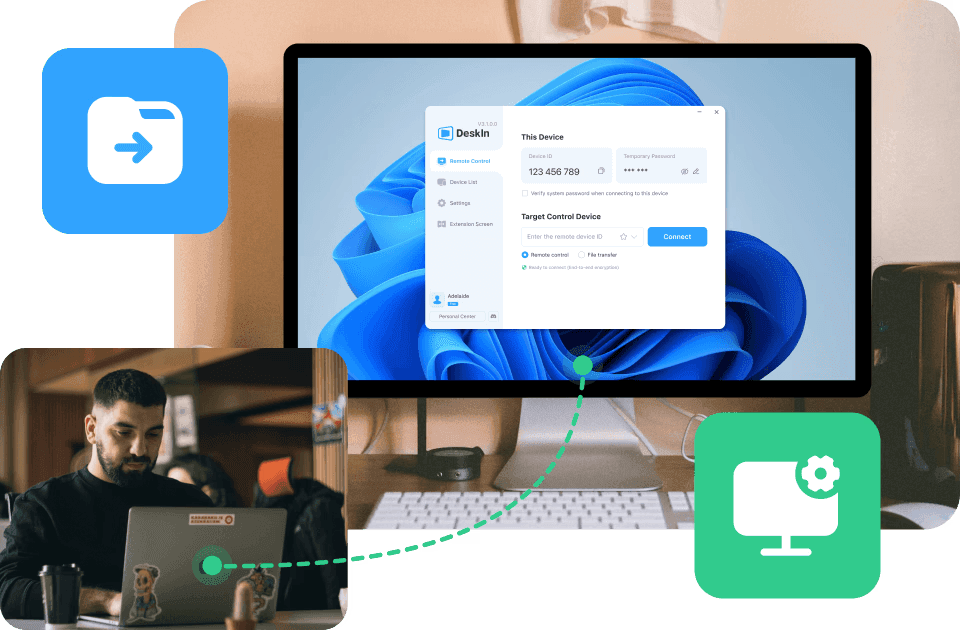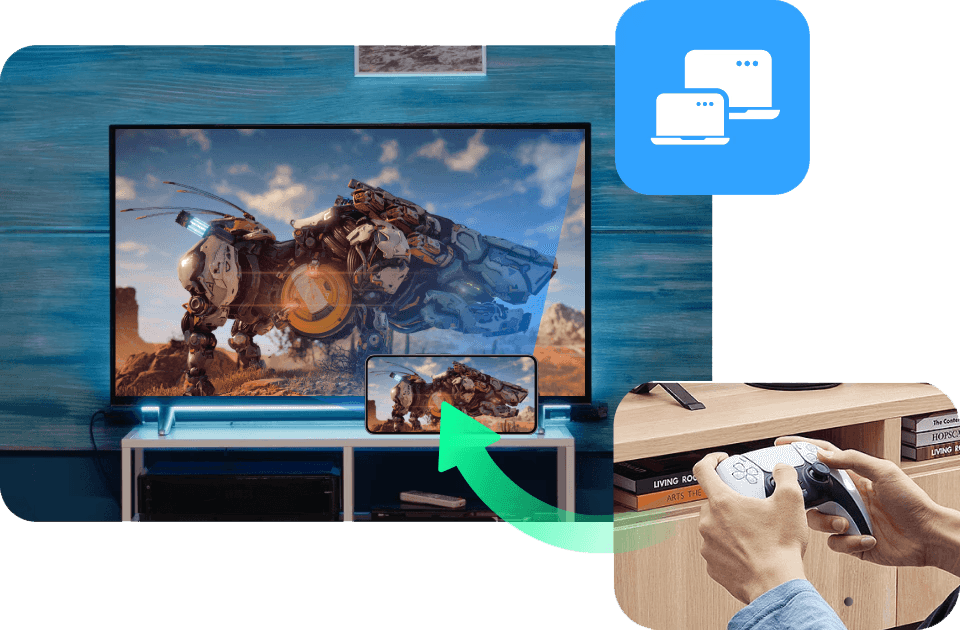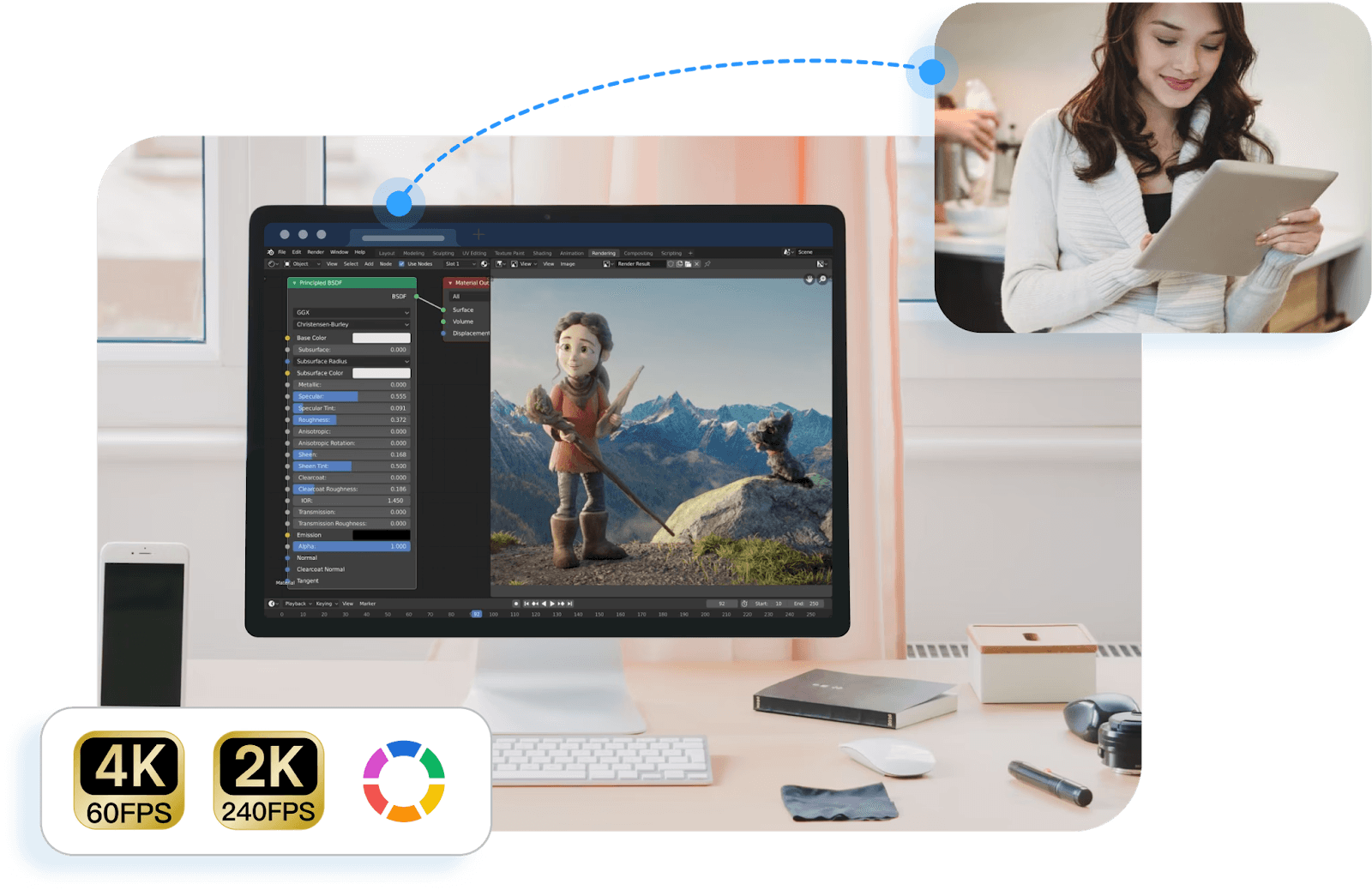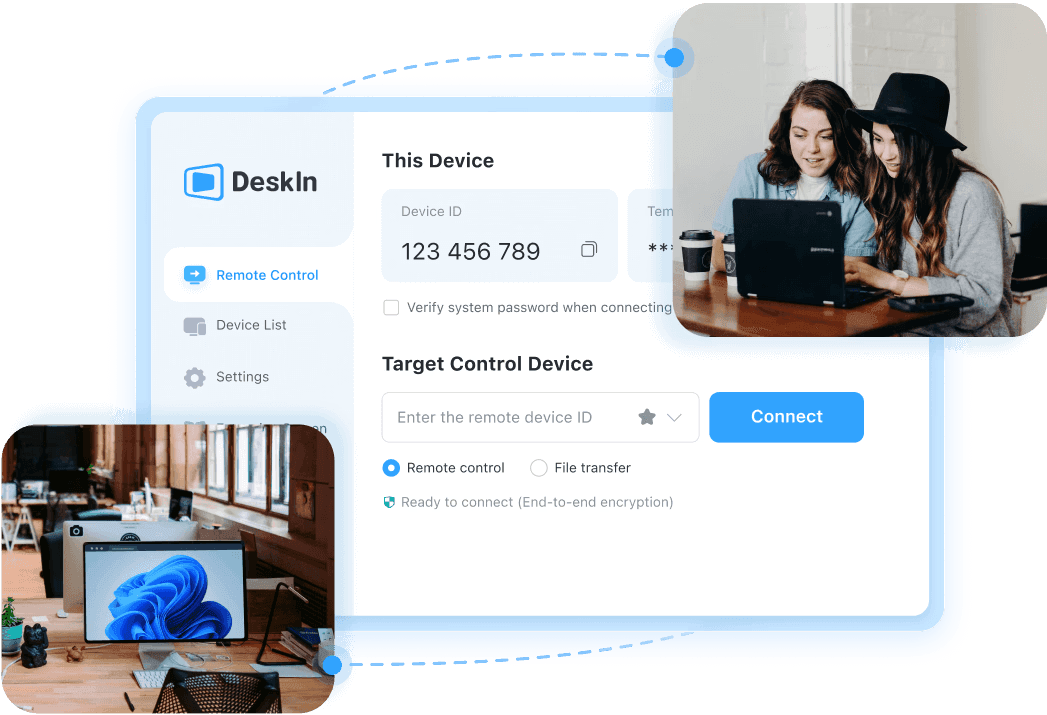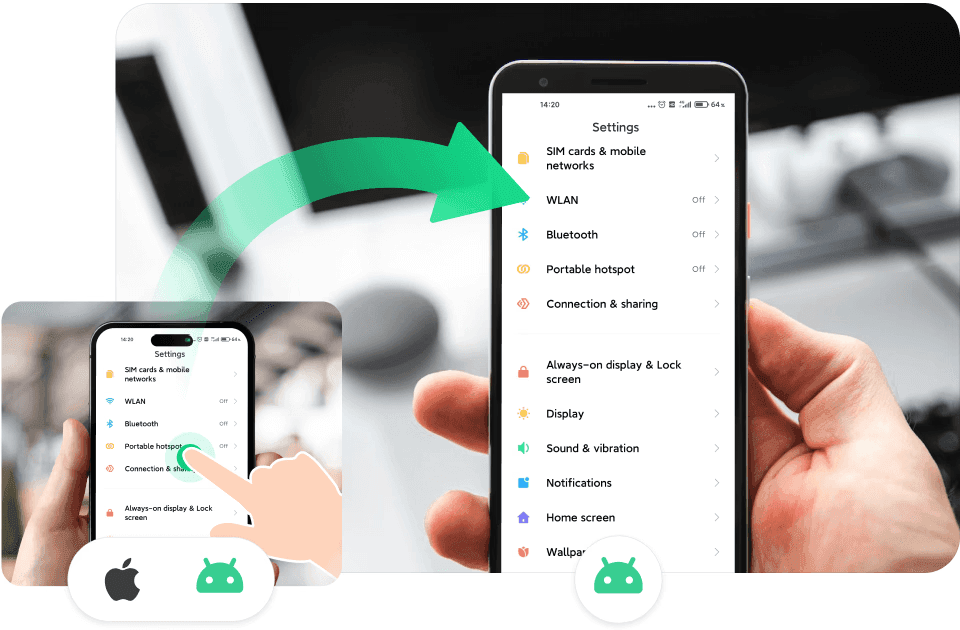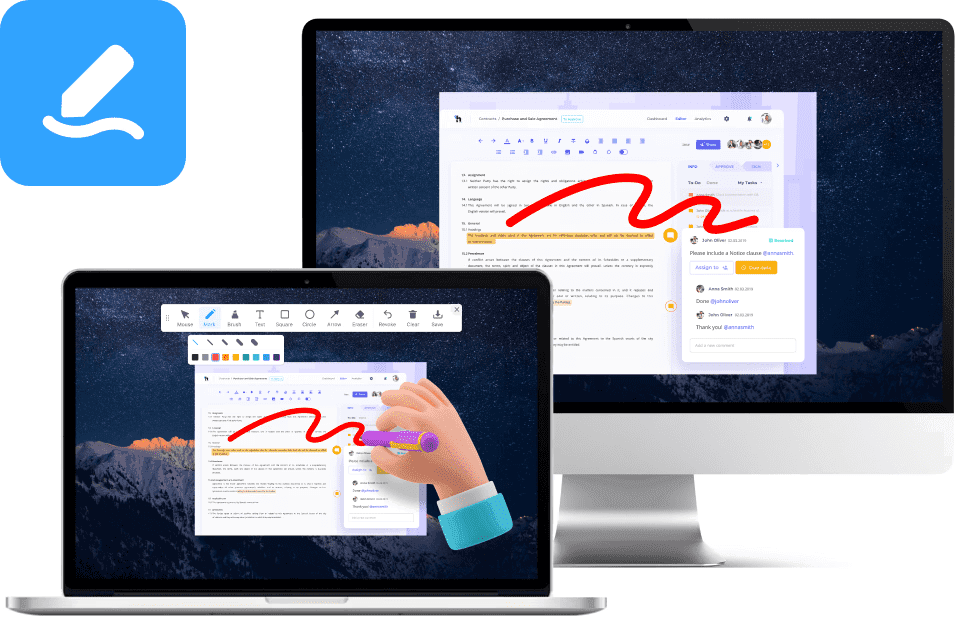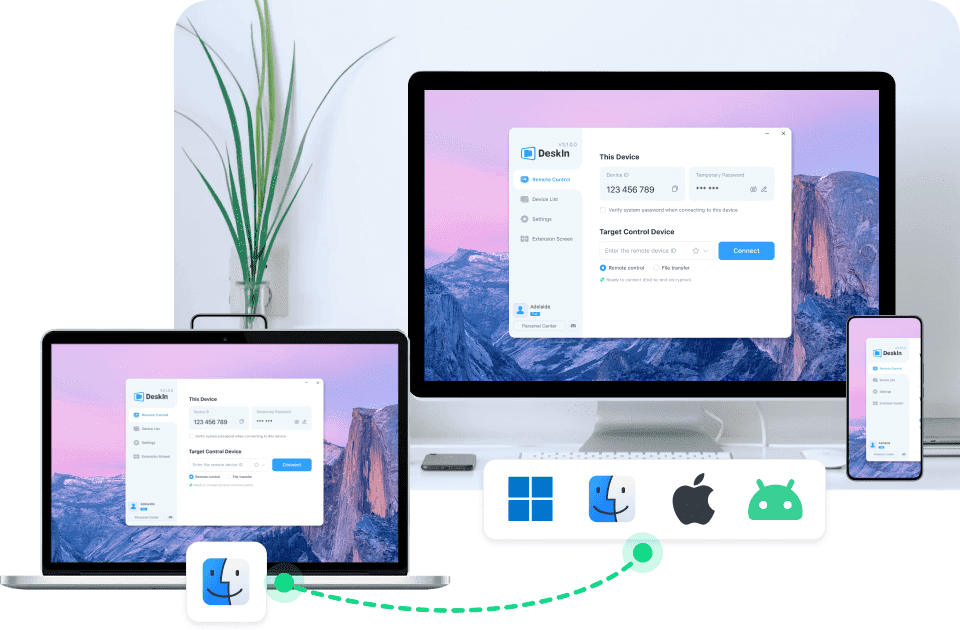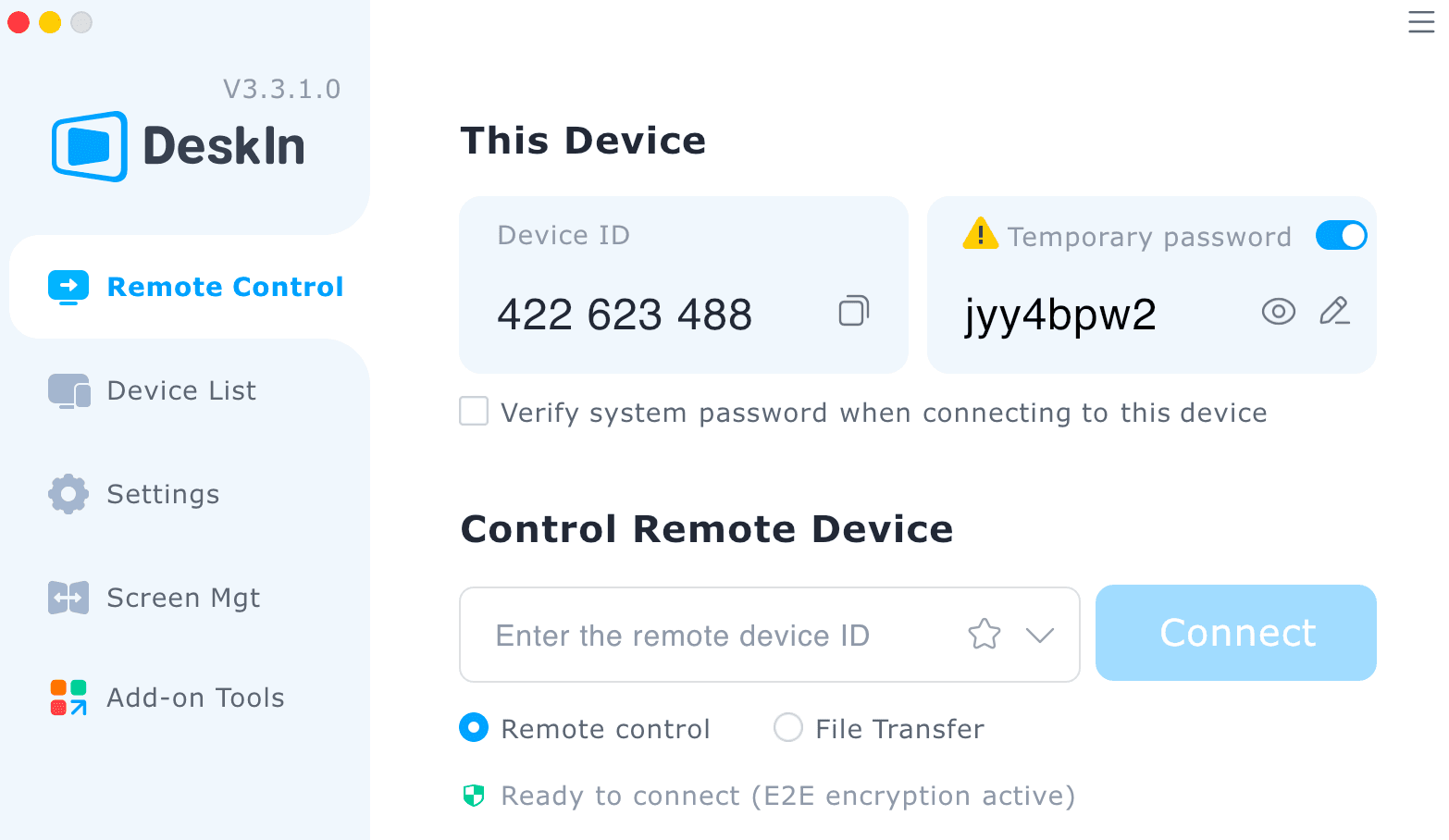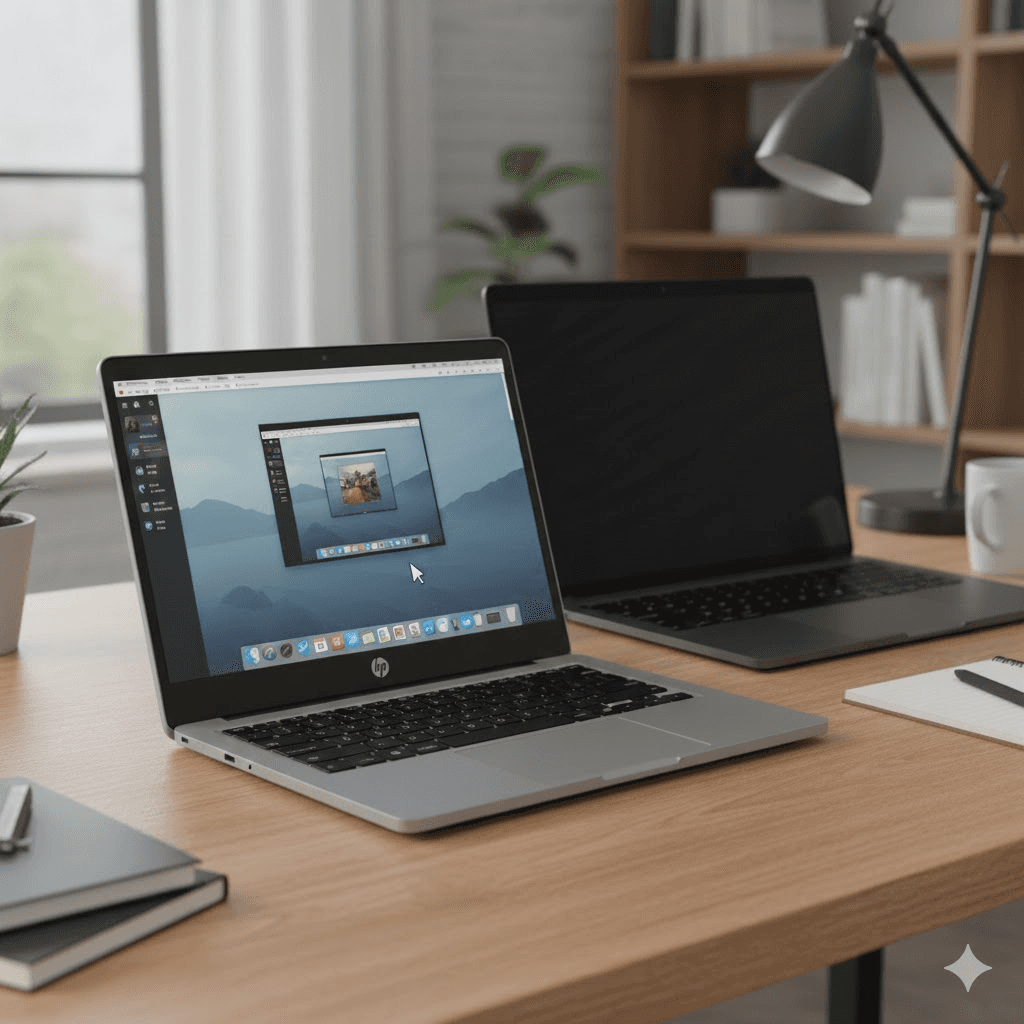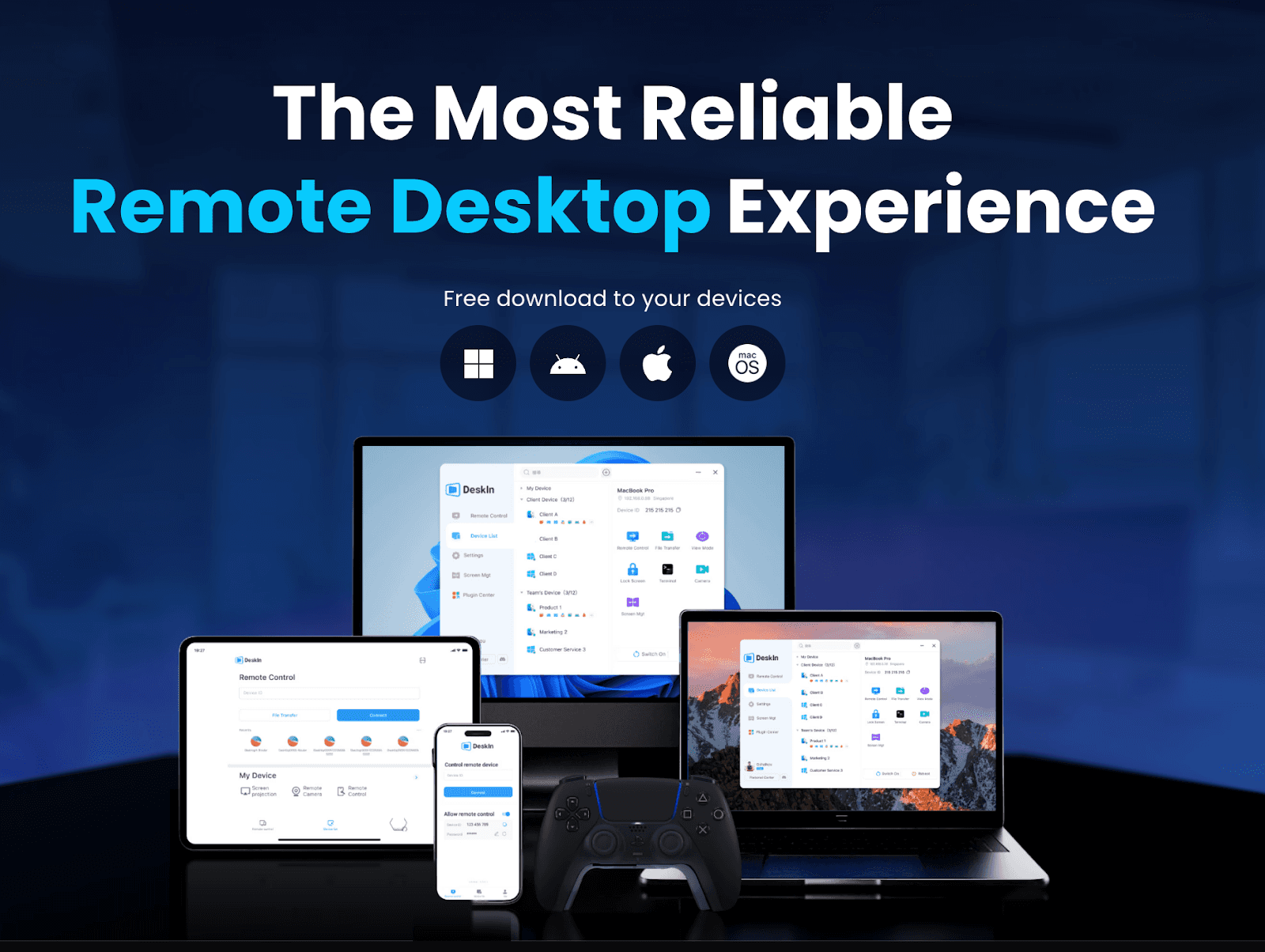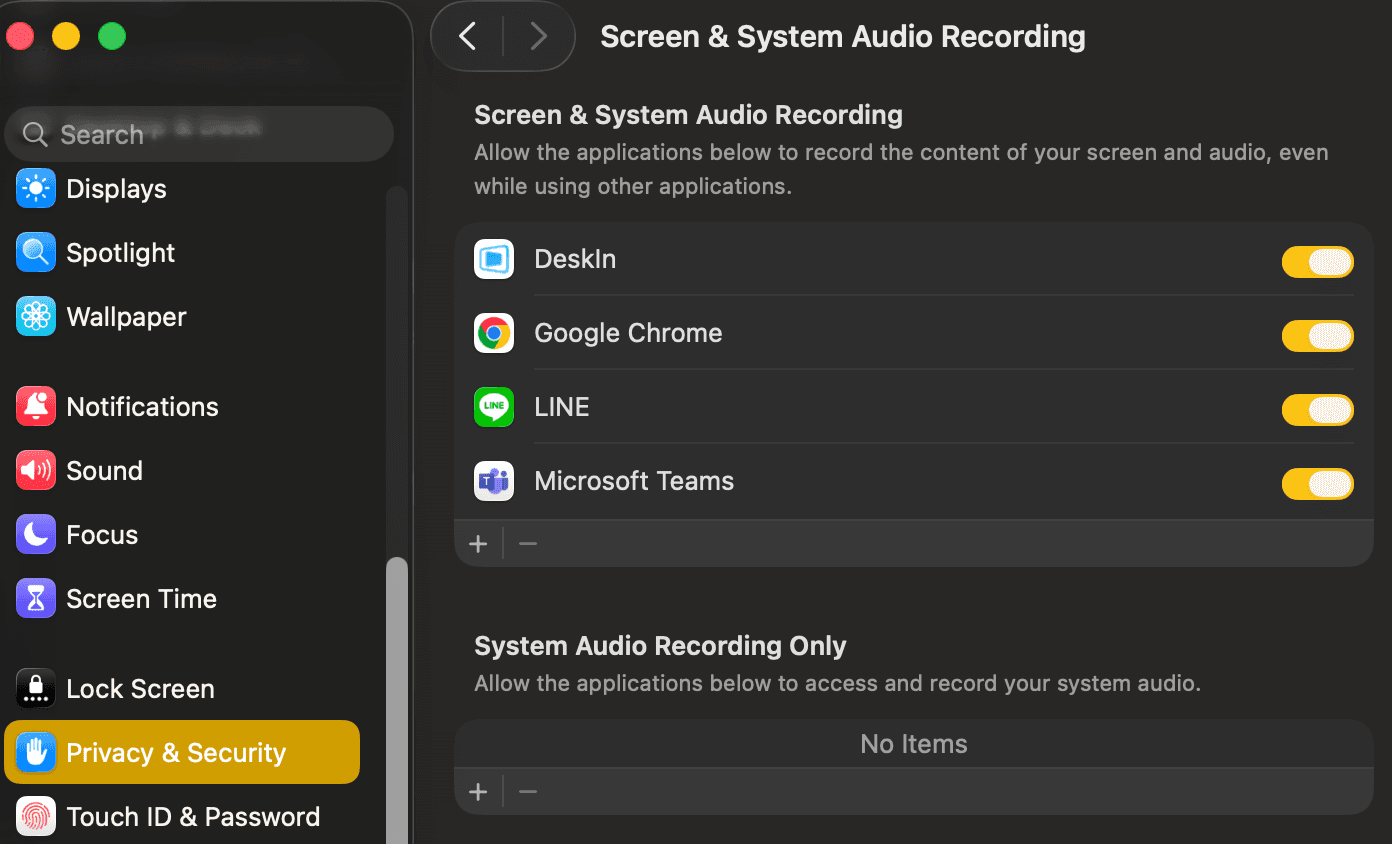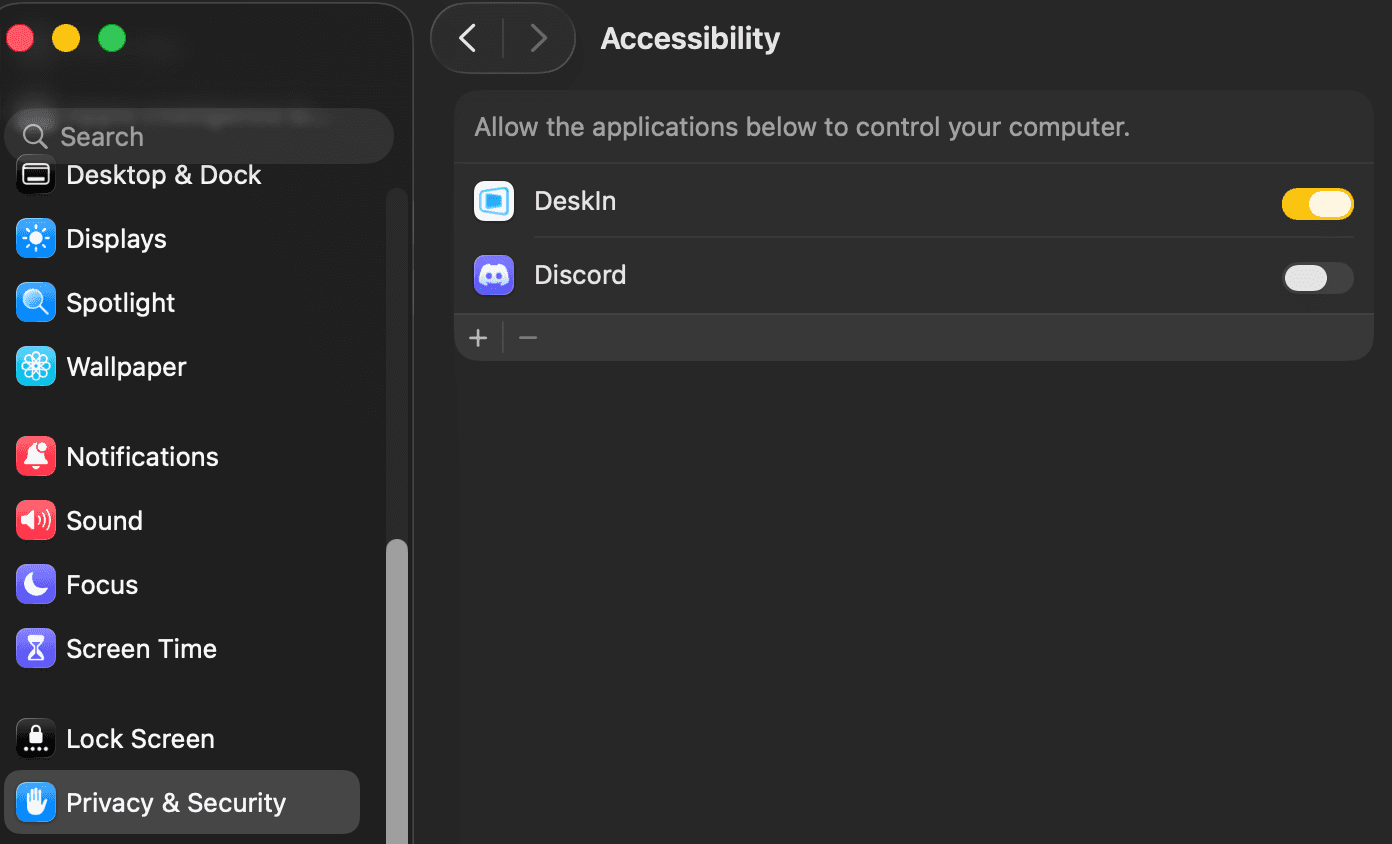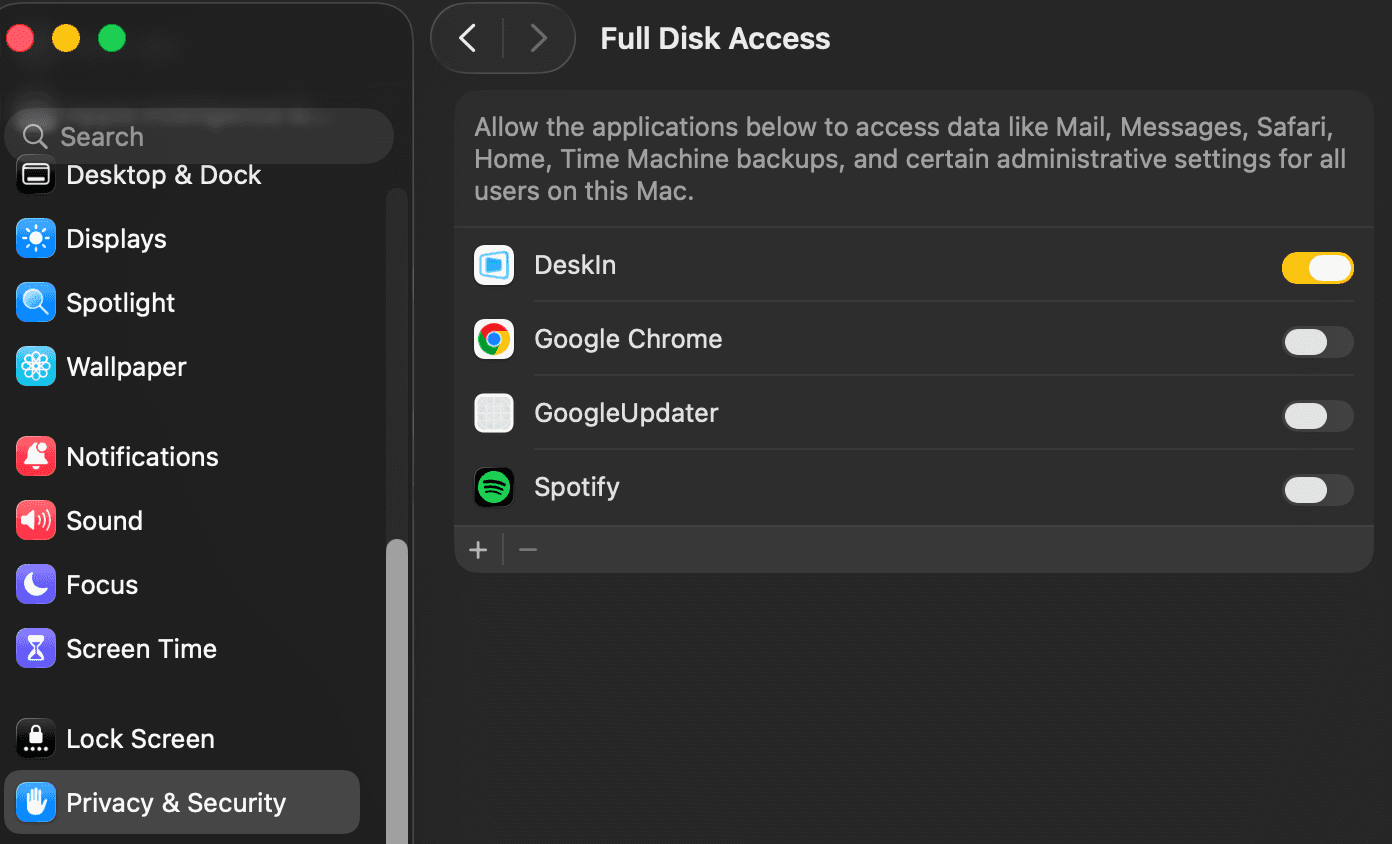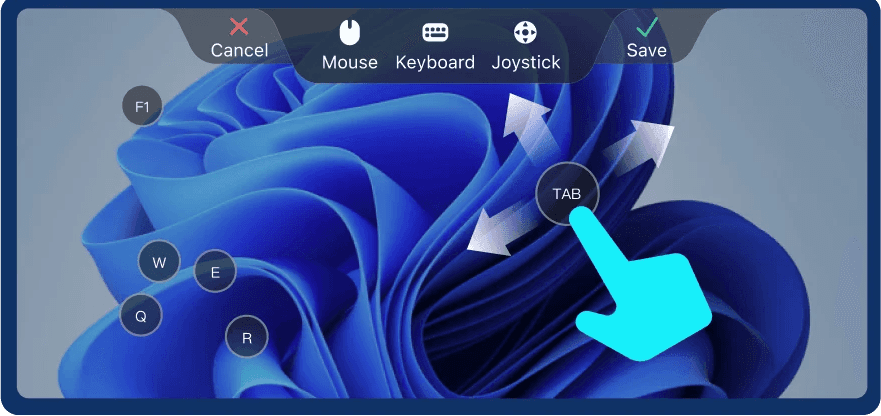你是否曾為了將舊電腦的檔案搬到新電腦而頭痛?或需要與同事互傳大型檔案,卻發現方法既麻煩又沒效率?無論是跨平台傳輸困難,還是找不到一個又快又簡單的解決方案,從 Reddit 論壇到各大科技社群,使用者們一直在尋找實用快速的方式。
本文將為你詳細介紹五種實用的電腦連線方法,從「一鍵遠端傳檔」到「離線藍牙分享」,一步步教你如何輕鬆連接兩台電腦,完美解決檔案互傳的常見困擾。不管你是要移轉大量資料,還是臨時分享小檔案,這裡都有最適合你的方式,讓你工作效率大幅提升!
快速一覽:選擇最適合你的方法
在深入瞭解具體步驟前,您可以先根據自身的使用場景,從下表快速找出最適合的傳檔方法,讓檔案传输事半功倍。
常見場景 | 推薦方法 | 推薦理由 |
臨時檔案分享:在會議中、課堂上或與朋友同事共處一室時,需要臨時分享幾個文件或照片。 | 方法四:藍牙傳輸 方法五:電子信箱 | • 無需安裝軟體,人人會用 • 無需網路,隨傳即用 |
傳輸敏感或私人檔案:傳輸合約、財務報告或包含個人資料等需要高度保密的檔案。 | 方法一:DeskIn 遠端傳輸 方法六:乙太網路 (LAN) 有線直連 | • 端對端加密,安全性高 • 點對點直連,資料不外流 |
電腦間的檔案分享:快速移動大型檔案、資料夾或多媒體內容,無需依賴 USB 隨身碟或雲端儲存。 | 方法一:DeskIn 遠端傳輸 方法三:區域網路 (Wi-Fi) 共享 | • 一鍵拖放傳檔,高速傳輸,節省等待時間 • 無檔案大小與數量限制 |
遠端跨平台/跨地點傳檔:需在 Windows 與 Mac 電腦間互傳檔案,或在家與公司等不同地點同步工作文件。 | 方法一:DeskIn 遠端傳輸 方法二:雲端硬碟 Google Drive | • 打破系統/地域限制,無縫連結 • 自動同步,隨時隨地存取 |
系統備份與遷移:在更換新電腦時傳輸資料,或在系統間本地備份重要檔案。 | 方法一:DeskIn 遠端傳輸 使用專業的電腦傳輸軟體 | • 高速傳輸,節省等待時間 • 無檔案大小與數量限制,搬運軟體、檔案等任何内容 |
方法一:使用 DeskIn 远端一鍵快速互傳大型檔案🔥
在所有方法中,使用 DeskIn 這類遠端軟體是最快速簡單的方法。DeskIn 是一款高效能遠端存取應用,能遠端連線到另外一台電腦,存取或傳輸檔案。它不受檔案格式與大小限制,最高傳輸速度可達12MB/s,能讓您快速完成大檔案互傳,輕鬆應對各類檔案,無論是體積龐大的設計圖檔、影片專案,還是日常工作中的 PPT 簡報、PDF 合同或整份資料夾,或是電腦對電腦傳輸資料,皆能暢通無阻地傳送。
操作上更是直覺簡單,您只需在兩台電腦上同時開啟 DeskIn,建立遠端連線後,透過介面中的「檔案傳輸」功能,即可直接以拖曳方式或點選電腦路徑上傳來輕鬆互傳檔案,整個過程僅需一至兩個步驟,大幅提升了工作效率。
無論你是跨筆電學習的學生、管理兩台電腦的玩家,或是需要無縫存取檔案和應用的專業人士,DeskIn 都能提供即時操控和檔案分享,穩定且簡便。
DeskIn - 幫助您快速傳輸任何檔案
真正遠端控制:隨時隨地存取並控制你的電腦,無需在同一網路下。
快速檔案傳輸:安全傳送大檔案(最高 12MB/s),無壓縮與大小限制。
跨平台支援:完美支援 Windows 與 Windows 之間,或 Windows 與 macOS 之間甚至macOS 與 macOS之間的跨平台檔案傳輸,打破系統隔閡。
隱私安全保障:包含螢幕遮罩、連線鎖定與電子郵件驗證,保護資料安全。
螢幕管理:支援虛擬螢幕與多螢幕擴展,遠端作業空間更靈活。
協作工具:剪貼簿同步、遠端攝影機存取,讓多工、檔案分享和即時監控更便利。
網路不佳優化:即使使用熱點或不穩定連線,透過我們的智慧網路導航系統,仍能維持流暢操作。
【指南】使用 DeskIn 在远端電腦之間互傳任何檔案
步驟一:在兩台電腦上從官方 DeskIn 網站或應用商店下載 DeskIn。

步驟二:在兩台設備上使用同一帳號註冊並登入。
步驟三:之後,兩台電腦上都會顯示裝置ID和密碼,在控制端電腦輸入第二台電腦的臨時密碼以建立連線。成功建立連線後,請點選工作列上的「檔案傳輸」功能。

步驟四:隨後會跳出一個直觀的雙窗格視窗,左側為本機檔案,右側為遠端電腦。找到您需要傳輸的檔案,直接從左側「本機」窗格,將檔案拖拽至右側「遠端電腦」窗格,即可輕鬆互傳 PPT 簡報、PDF 合同、影片素材等任何檔案、圖片或整個資料夾。
憑藉 DeskIn 平均 12MB/s 的高速傳輸效能,一個 1GB 的大型檔案僅需約 1.5 分鐘即可完成傳送。

更多閲讀
方法二:使用雲端硬碟在兩台電腦之間互傳檔案
使用雲端硬碟如 Google Drive、Dropbox 是兩台電腦間互傳檔案極為便利的方法。不僅可以跨設備同步,無需直接連線,更無需下載軟體。您只需將檔案上傳至雲端硬碟,即可在任何一台電腦的瀏覽器或桌面應用程式中下載它。它完美支援 Windows 與 macOS 之間的跨平台傳輸,不受作業系統限制。
此方法特別適合以下需求與場景:
需要在不同地點如公司與家中存取同一批工作檔案,或與團隊成員共享專案資料。
追求操作簡便、希望檔案能保留版本記錄,並需要額外雲端備份的使用者。
對於需要即時協作或頻繁更新檔案的工作流程而言,雲端硬碟是一個高效且可靠的選擇。
局限性
需穩定網路:上傳與下載過程完全依賴網路品質,速度不穩會導致中斷。
空間限制:免費帳戶儲存空間有限(如 Google Drive 只有 15GB)。
隱私風險:雲端伺服器可能有資料外洩風險,敏感檔案不建議使用。
傳輸延遲:大檔案需先上傳再下載,比直接傳輸更耗時。
【指南】在远端電腦之間互傳任何檔案
步驟一:上傳檔案至雲端 在電腦 A 上,開啟瀏覽器並前往 [drive.google.com],登入您的 Google 帳戶。接著,點擊畫面上的「新增」按鈕,選擇「檔案上傳」或「資料夾上傳」,然後從您的電腦中選取要傳輸的檔案。請靜待檔案完全上傳至雲端。

小貼士:
注意儲存空間,傳輸前留意您的 Google 帳戶的可用儲存空間,免費帳戶通常為 15GB,確保空間足夠容納您要傳輸的檔案。
在傳輸過程中,整個上傳與下載過程需要穩定的網路連線,請確保兩台電腦的網路順暢,以避免傳輸中斷。
步驟二:在另一台電腦下載檔案
在電腦 B 上,使用同一個 Google 帳戶登入 Google 雲端硬碟網頁。找到您從電腦 A 上傳的檔案或資料夾後,在檔案上按一下滑鼠右鍵,並在選單中點選「下載」即可。系統會將檔案打包成一個 .zip 壓縮檔下載到您的電腦,您再將其解壓縮即可使用。

方法三:透過 Wi-Fi 連接兩台電腦互傳檔案
如果兩台電腦都連接到同一個Wi-Fi網路,您可以設定網路共享來傳輸檔案、存取資料夾或共享印表機。這是在Windows 10或11上透過無線方式連接兩台電腦最有效率的方法之一,特別適合本地檔案共享和協同使用。
局限性
設定繁瑣:需手動開啟「網路探索」與「檔案共用」功能,新手易出錯。
僅限同網段:兩台電腦必須在同一 Wi-Fi 下,無法跨地點使用。
安全性低:若網路共用設定不當,易導致資料夾被未授權存取。
傳輸速度受干擾:Wi-Fi 訊號不穩或多人使用時,傳輸速度會下降。
但請注意,如果您需要與不同地點的同事或家人互傳檔案,或是追求簡單直覺、不想鑽研網路設定的操作體驗,那麼這個方法便不適合您。在這種情況下,使用 DeskIn 這類提供内建檔案傳輸、支持跨網絡傳輸的遠端軟體會是更佳選擇。
【指南】使用 Wi-Fi 傳輸檔案
步驟一:確認兩台電腦都連接到相同的 Wi-Fi 網路。
步驟二:在兩台電腦上,依序進入「設定 > 網路與網際網路 > 進階網路設定 > 進階分享設定」,開啟「網路探索」及「檔案與印表機共用」功能(私人網路模式下)。
步驟三:在想分享的資料夾上點擊右鍵,選擇「內容 > 共享 > 分享」,設定使用者及權限。
步驟四:在另一台電腦的檔案總管中點擊「網路」,找到第一台電腦並開啟共享資料夾。

方法四:透過藍牙直連筆電,小檔案隨傳即用
如果您只需要傳輸小檔案且不需要持續存取,藍牙是一種簡單且無需纜線的解決方案,可以連接兩台筆記型電腦或電腦。大多數現代 Windows 裝置內建藍牙功能,且不需要網際網路連線。
需要注意的是,雖然藍牙使用簡便,但不適合大量檔案傳輸或持續使用。其平均速度僅約 1-3 MB/s,遠低於 Wi-Fi 傳輸,且連線不穩,存在傳輸失敗的可能。當速度不是優先考量,只需分享幾個文件或圖片時,藍牙是最佳選擇。
局限性
傳輸速度慢:平均僅 1–3 MB/s,不適合大檔案或影片素材。
傳輸範圍短:需兩台裝置距離近(約 10 公尺內)。
連線不穩:藍牙常出現配對失敗或中斷狀況。
僅適用小檔案:無法批量或持續傳輸資料夾。
【指南】使用藍牙互傳小檔案
步驟一:在兩台裝置的「設定 > 藍牙與裝置」中啟用藍牙。
步驟二:在其中一台電腦上點選「新增藍牙或其他裝置 > 藍牙」,當另一台電腦出現時選擇它,並在雙方確認配對碼。

步驟三:要傳送檔案,右鍵點擊檔案並選擇「傳送到 > 藍牙裝置」。

步驟四:在跳出的視窗中,選擇「傳送檔案」,選擇另一台已配對的 Windows 電腦,然後點擊「下一步」開始傳輸。在「接收端」電腦上,您會收到檔案傳入通知,請選擇「接受」或「儲存」即可完成傳輸。

方法五:使用電子信箱和同事電腦互傳小體積檔案
若您只需要偶發,且檔案體積不大,使用電子信箱會是一個更加快速簡單的方案。對於那些僅需傳送單份文件、簡報或少量照片的輕度用戶,會推薦采用這個方法。無需安裝任何軟體,直接傳輸檔案給另一台 Windows 或者 Mac。
然而,此方法的限制也相當明顯。多數信箱有附件容量上限,通常為25MB,所以不適合傳送影片、設計稿等大型檔案。同時,檔案散落於不同郵件中,不利於後續的集中管理與查找。若您需要傳輸大型檔案,建議改用 DeskIn 進行高速傳輸,不僅沒有容量限制,還能保持檔案的集中管理與整理。
局限性
附件限制:大多信箱僅支援 25MB 以下附件,影片與專案檔難以傳輸。
整理困難:檔案分散於多封郵件,不利後續統一管理。
無法即時更新:需手動上傳與下載,無自動同步功能。
資料外洩風險:若郵件誤寄或帳號外洩,可能造成檔案洩露。
更多閲讀:4個方法透過電子郵件傳輸大型檔案
【指南】快速兩台電腦之間互傳小體積檔案
步驟 1:從電腦 A 寄出檔案
登入您的電子信箱,如 Gmail、Outlook 等。點擊「撰寫」新郵件。在「收件者」欄位中,輸入您自己的電子信箱地址。若需直接分享給同事,則改為輸入對方的信箱地址。
點擊「附加檔案」圖示,從您的電腦中選取想要傳送的檔案。確認所有附件的總大小未超過25MB。若檔案過大,需先使用壓縮軟體(如 7-Zip、WinRAR)進行壓縮。
點擊「傳送」。

步驟 2:在電腦 B 下載檔案
在電腦 B 上,開啟網頁瀏覽器並登入同一個電子信箱。
開啟您從電腦 A 寄給自己的那封新郵件。您會看到附件檔案顯示在郵件中。直接點擊附件旁的「下載」按鈕或圖示。
選擇要儲存到電腦 B 上的位置,即可完成傳輸。
方法六:使用 LAN 網路線(乙太網路)穩定互傳檔案
若要實現兩台電腦之間最快、最穩定的檔案傳輸,特別是在搬移大量檔案或多媒體內容時,使用乙太網路(LAN)網路線是最佳的有線方案。傳輸速度極高且不受無線干擾影響;唯一要注意的是,兩台裝置需放置於可物理連接的距離,並需具備基本的 IP 設定知識,才能成功建立區域網路連線。
局限性
操作技術門檻高:需自行設定 IP 位址與網路參數。
物理距離限制:必須讓兩台電腦靠近、能用網路線連接。
不支援跨地點:僅能在同空間內傳輸。
不支援即時同步:屬一次性傳輸,無法像雲端或遠端工具自動更新。
【指南】使用 LAN 網路線傳輸隱私檔案
步驟一:使用 Cat5e 或 Cat6 網路線連接兩台電腦。大多數現代電腦支援自動偵測,一般網路線即可使用。
步驟二:在兩台電腦中啟用「檔案與印表機共用」,路徑為「設定 > 網路 > 進階共用設定」。
步驟三:手動設定 IP 位址:
電腦1:IP = 192.168.0.1,子網路遮罩 = 255.255.255.0
電腦2:IP = 192.168.0.2,子網路遮罩 = 255.255.255.0
進入「控制台 > 網路和共用中心 > 變更介面卡設定」,右鍵點選「乙太網路介面卡 > 內容 > IPv4」進行設定。
步驟四:分享想要的資料夾,並在第二台電腦的「檔案總管 > 網路」中存取。

關於兩台電腦傳輸檔案的常見問題解答
問:可以在沒有網路的情況下連接兩台電腦嗎?
答:可以,兩台電腦可以直接連接而不需使用網路。常見的方法包括使用LAN(乙太網路)線纜或在本地Wi-Fi網路上啟用網路共享。這些方法都能讓設備之間傳輸檔案或共享資源,但需要一些設定,例如設定IP地址或開啟網路探索功能。
問:兩台電腦之間傳輸大型檔案的最佳方式是什麼?
答:如果你要傳輸大型檔案(例如影片、軟體套件或備份),使用LAN線纜是本地最快速的方法。但若需要遠端傳輸或無法實體接觸設備,DeskIn是理想選擇——它支援高達12MB/s的高速檔案傳輸,且不像雲端硬碟或藍牙有檔案大小限制。
問:我可以將兩台電腦當作雙螢幕使用來多工嗎?
答:可以,DeskIn 讓這件事更簡單。透過多螢幕擴展功能,你可以延伸或鏡像螢幕,將其中一台電腦變成第二個顯示器或工作區。這種配置非常適合程式設計師、內容創作者或交易員,能在不需要額外硬體的情況下獲得更多螢幕空間。
結語
總體而言,連接兩台電腦傳輸檔案的方法眾多,每種方案各有其適用場景。乙太網路線適合固定環境內高速傳輸,Wi-Fi 區域網路共享便於同網路下的檔案交換,藍牙適用於臨時小檔案傳輸,雲端硬碟則适合工作档案互传。
若您常需在不同地點、不同平台間快速交換檔案,又希望兼具高速、安全與操作簡便,那麼 DeskIn 將是您的理想選擇。它整合了遠端控制與檔案傳輸功能,不僅打破空間與系統限制,更提供穩定流暢的協作體驗,讓您無論身在何處,都能輕鬆在多台电脑之间互传档案。

你是否曾為了將舊電腦的檔案搬到新電腦而頭痛?或需要與同事互傳大型檔案,卻發現方法既麻煩又沒效率?無論是跨平台傳輸困難,還是找不到一個又快又簡單的解決方案,從 Reddit 論壇到各大科技社群,使用者們一直在尋找實用快速的方式。
本文將為你詳細介紹五種實用的電腦連線方法,從「一鍵遠端傳檔」到「離線藍牙分享」,一步步教你如何輕鬆連接兩台電腦,完美解決檔案互傳的常見困擾。不管你是要移轉大量資料,還是臨時分享小檔案,這裡都有最適合你的方式,讓你工作效率大幅提升!
快速一覽:選擇最適合你的方法
在深入瞭解具體步驟前,您可以先根據自身的使用場景,從下表快速找出最適合的傳檔方法,讓檔案传输事半功倍。
常見場景 | 推薦方法 | 推薦理由 |
臨時檔案分享:在會議中、課堂上或與朋友同事共處一室時,需要臨時分享幾個文件或照片。 | 方法四:藍牙傳輸 方法五:電子信箱 | • 無需安裝軟體,人人會用 • 無需網路,隨傳即用 |
傳輸敏感或私人檔案:傳輸合約、財務報告或包含個人資料等需要高度保密的檔案。 | 方法一:DeskIn 遠端傳輸 方法六:乙太網路 (LAN) 有線直連 | • 端對端加密,安全性高 • 點對點直連,資料不外流 |
電腦間的檔案分享:快速移動大型檔案、資料夾或多媒體內容,無需依賴 USB 隨身碟或雲端儲存。 | 方法一:DeskIn 遠端傳輸 方法三:區域網路 (Wi-Fi) 共享 | • 一鍵拖放傳檔,高速傳輸,節省等待時間 • 無檔案大小與數量限制 |
遠端跨平台/跨地點傳檔:需在 Windows 與 Mac 電腦間互傳檔案,或在家與公司等不同地點同步工作文件。 | 方法一:DeskIn 遠端傳輸 方法二:雲端硬碟 Google Drive | • 打破系統/地域限制,無縫連結 • 自動同步,隨時隨地存取 |
系統備份與遷移:在更換新電腦時傳輸資料,或在系統間本地備份重要檔案。 | 方法一:DeskIn 遠端傳輸 使用專業的電腦傳輸軟體 | • 高速傳輸,節省等待時間 • 無檔案大小與數量限制,搬運軟體、檔案等任何内容 |
方法一:使用 DeskIn 远端一鍵快速互傳大型檔案🔥
在所有方法中,使用 DeskIn 這類遠端軟體是最快速簡單的方法。DeskIn 是一款高效能遠端存取應用,能遠端連線到另外一台電腦,存取或傳輸檔案。它不受檔案格式與大小限制,最高傳輸速度可達12MB/s,能讓您快速完成大檔案互傳,輕鬆應對各類檔案,無論是體積龐大的設計圖檔、影片專案,還是日常工作中的 PPT 簡報、PDF 合同或整份資料夾,或是電腦對電腦傳輸資料,皆能暢通無阻地傳送。
操作上更是直覺簡單,您只需在兩台電腦上同時開啟 DeskIn,建立遠端連線後,透過介面中的「檔案傳輸」功能,即可直接以拖曳方式或點選電腦路徑上傳來輕鬆互傳檔案,整個過程僅需一至兩個步驟,大幅提升了工作效率。
無論你是跨筆電學習的學生、管理兩台電腦的玩家,或是需要無縫存取檔案和應用的專業人士,DeskIn 都能提供即時操控和檔案分享,穩定且簡便。
DeskIn - 幫助您快速傳輸任何檔案
真正遠端控制:隨時隨地存取並控制你的電腦,無需在同一網路下。
快速檔案傳輸:安全傳送大檔案(最高 12MB/s),無壓縮與大小限制。
跨平台支援:完美支援 Windows 與 Windows 之間,或 Windows 與 macOS 之間甚至macOS 與 macOS之間的跨平台檔案傳輸,打破系統隔閡。
隱私安全保障:包含螢幕遮罩、連線鎖定與電子郵件驗證,保護資料安全。
螢幕管理:支援虛擬螢幕與多螢幕擴展,遠端作業空間更靈活。
協作工具:剪貼簿同步、遠端攝影機存取,讓多工、檔案分享和即時監控更便利。
網路不佳優化:即使使用熱點或不穩定連線,透過我們的智慧網路導航系統,仍能維持流暢操作。
【指南】使用 DeskIn 在远端電腦之間互傳任何檔案
步驟一:在兩台電腦上從官方 DeskIn 網站或應用商店下載 DeskIn。

步驟二:在兩台設備上使用同一帳號註冊並登入。
步驟三:之後,兩台電腦上都會顯示裝置ID和密碼,在控制端電腦輸入第二台電腦的臨時密碼以建立連線。成功建立連線後,請點選工作列上的「檔案傳輸」功能。

步驟四:隨後會跳出一個直觀的雙窗格視窗,左側為本機檔案,右側為遠端電腦。找到您需要傳輸的檔案,直接從左側「本機」窗格,將檔案拖拽至右側「遠端電腦」窗格,即可輕鬆互傳 PPT 簡報、PDF 合同、影片素材等任何檔案、圖片或整個資料夾。
憑藉 DeskIn 平均 12MB/s 的高速傳輸效能,一個 1GB 的大型檔案僅需約 1.5 分鐘即可完成傳送。

更多閲讀
方法二:使用雲端硬碟在兩台電腦之間互傳檔案
使用雲端硬碟如 Google Drive、Dropbox 是兩台電腦間互傳檔案極為便利的方法。不僅可以跨設備同步,無需直接連線,更無需下載軟體。您只需將檔案上傳至雲端硬碟,即可在任何一台電腦的瀏覽器或桌面應用程式中下載它。它完美支援 Windows 與 macOS 之間的跨平台傳輸,不受作業系統限制。
此方法特別適合以下需求與場景:
需要在不同地點如公司與家中存取同一批工作檔案,或與團隊成員共享專案資料。
追求操作簡便、希望檔案能保留版本記錄,並需要額外雲端備份的使用者。
對於需要即時協作或頻繁更新檔案的工作流程而言,雲端硬碟是一個高效且可靠的選擇。
局限性
需穩定網路:上傳與下載過程完全依賴網路品質,速度不穩會導致中斷。
空間限制:免費帳戶儲存空間有限(如 Google Drive 只有 15GB)。
隱私風險:雲端伺服器可能有資料外洩風險,敏感檔案不建議使用。
傳輸延遲:大檔案需先上傳再下載,比直接傳輸更耗時。
【指南】在远端電腦之間互傳任何檔案
步驟一:上傳檔案至雲端 在電腦 A 上,開啟瀏覽器並前往 [drive.google.com],登入您的 Google 帳戶。接著,點擊畫面上的「新增」按鈕,選擇「檔案上傳」或「資料夾上傳」,然後從您的電腦中選取要傳輸的檔案。請靜待檔案完全上傳至雲端。

小貼士:
注意儲存空間,傳輸前留意您的 Google 帳戶的可用儲存空間,免費帳戶通常為 15GB,確保空間足夠容納您要傳輸的檔案。
在傳輸過程中,整個上傳與下載過程需要穩定的網路連線,請確保兩台電腦的網路順暢,以避免傳輸中斷。
步驟二:在另一台電腦下載檔案
在電腦 B 上,使用同一個 Google 帳戶登入 Google 雲端硬碟網頁。找到您從電腦 A 上傳的檔案或資料夾後,在檔案上按一下滑鼠右鍵,並在選單中點選「下載」即可。系統會將檔案打包成一個 .zip 壓縮檔下載到您的電腦,您再將其解壓縮即可使用。

方法三:透過 Wi-Fi 連接兩台電腦互傳檔案
如果兩台電腦都連接到同一個Wi-Fi網路,您可以設定網路共享來傳輸檔案、存取資料夾或共享印表機。這是在Windows 10或11上透過無線方式連接兩台電腦最有效率的方法之一,特別適合本地檔案共享和協同使用。
局限性
設定繁瑣:需手動開啟「網路探索」與「檔案共用」功能,新手易出錯。
僅限同網段:兩台電腦必須在同一 Wi-Fi 下,無法跨地點使用。
安全性低:若網路共用設定不當,易導致資料夾被未授權存取。
傳輸速度受干擾:Wi-Fi 訊號不穩或多人使用時,傳輸速度會下降。
但請注意,如果您需要與不同地點的同事或家人互傳檔案,或是追求簡單直覺、不想鑽研網路設定的操作體驗,那麼這個方法便不適合您。在這種情況下,使用 DeskIn 這類提供内建檔案傳輸、支持跨網絡傳輸的遠端軟體會是更佳選擇。
【指南】使用 Wi-Fi 傳輸檔案
步驟一:確認兩台電腦都連接到相同的 Wi-Fi 網路。
步驟二:在兩台電腦上,依序進入「設定 > 網路與網際網路 > 進階網路設定 > 進階分享設定」,開啟「網路探索」及「檔案與印表機共用」功能(私人網路模式下)。
步驟三:在想分享的資料夾上點擊右鍵,選擇「內容 > 共享 > 分享」,設定使用者及權限。
步驟四:在另一台電腦的檔案總管中點擊「網路」,找到第一台電腦並開啟共享資料夾。

方法四:透過藍牙直連筆電,小檔案隨傳即用
如果您只需要傳輸小檔案且不需要持續存取,藍牙是一種簡單且無需纜線的解決方案,可以連接兩台筆記型電腦或電腦。大多數現代 Windows 裝置內建藍牙功能,且不需要網際網路連線。
需要注意的是,雖然藍牙使用簡便,但不適合大量檔案傳輸或持續使用。其平均速度僅約 1-3 MB/s,遠低於 Wi-Fi 傳輸,且連線不穩,存在傳輸失敗的可能。當速度不是優先考量,只需分享幾個文件或圖片時,藍牙是最佳選擇。
局限性
傳輸速度慢:平均僅 1–3 MB/s,不適合大檔案或影片素材。
傳輸範圍短:需兩台裝置距離近(約 10 公尺內)。
連線不穩:藍牙常出現配對失敗或中斷狀況。
僅適用小檔案:無法批量或持續傳輸資料夾。
【指南】使用藍牙互傳小檔案
步驟一:在兩台裝置的「設定 > 藍牙與裝置」中啟用藍牙。
步驟二:在其中一台電腦上點選「新增藍牙或其他裝置 > 藍牙」,當另一台電腦出現時選擇它,並在雙方確認配對碼。

步驟三:要傳送檔案,右鍵點擊檔案並選擇「傳送到 > 藍牙裝置」。

步驟四:在跳出的視窗中,選擇「傳送檔案」,選擇另一台已配對的 Windows 電腦,然後點擊「下一步」開始傳輸。在「接收端」電腦上,您會收到檔案傳入通知,請選擇「接受」或「儲存」即可完成傳輸。

方法五:使用電子信箱和同事電腦互傳小體積檔案
若您只需要偶發,且檔案體積不大,使用電子信箱會是一個更加快速簡單的方案。對於那些僅需傳送單份文件、簡報或少量照片的輕度用戶,會推薦采用這個方法。無需安裝任何軟體,直接傳輸檔案給另一台 Windows 或者 Mac。
然而,此方法的限制也相當明顯。多數信箱有附件容量上限,通常為25MB,所以不適合傳送影片、設計稿等大型檔案。同時,檔案散落於不同郵件中,不利於後續的集中管理與查找。若您需要傳輸大型檔案,建議改用 DeskIn 進行高速傳輸,不僅沒有容量限制,還能保持檔案的集中管理與整理。
局限性
附件限制:大多信箱僅支援 25MB 以下附件,影片與專案檔難以傳輸。
整理困難:檔案分散於多封郵件,不利後續統一管理。
無法即時更新:需手動上傳與下載,無自動同步功能。
資料外洩風險:若郵件誤寄或帳號外洩,可能造成檔案洩露。
更多閲讀:4個方法透過電子郵件傳輸大型檔案
【指南】快速兩台電腦之間互傳小體積檔案
步驟 1:從電腦 A 寄出檔案
登入您的電子信箱,如 Gmail、Outlook 等。點擊「撰寫」新郵件。在「收件者」欄位中,輸入您自己的電子信箱地址。若需直接分享給同事,則改為輸入對方的信箱地址。
點擊「附加檔案」圖示,從您的電腦中選取想要傳送的檔案。確認所有附件的總大小未超過25MB。若檔案過大,需先使用壓縮軟體(如 7-Zip、WinRAR)進行壓縮。
點擊「傳送」。

步驟 2:在電腦 B 下載檔案
在電腦 B 上,開啟網頁瀏覽器並登入同一個電子信箱。
開啟您從電腦 A 寄給自己的那封新郵件。您會看到附件檔案顯示在郵件中。直接點擊附件旁的「下載」按鈕或圖示。
選擇要儲存到電腦 B 上的位置,即可完成傳輸。
方法六:使用 LAN 網路線(乙太網路)穩定互傳檔案
若要實現兩台電腦之間最快、最穩定的檔案傳輸,特別是在搬移大量檔案或多媒體內容時,使用乙太網路(LAN)網路線是最佳的有線方案。傳輸速度極高且不受無線干擾影響;唯一要注意的是,兩台裝置需放置於可物理連接的距離,並需具備基本的 IP 設定知識,才能成功建立區域網路連線。
局限性
操作技術門檻高:需自行設定 IP 位址與網路參數。
物理距離限制:必須讓兩台電腦靠近、能用網路線連接。
不支援跨地點:僅能在同空間內傳輸。
不支援即時同步:屬一次性傳輸,無法像雲端或遠端工具自動更新。
【指南】使用 LAN 網路線傳輸隱私檔案
步驟一:使用 Cat5e 或 Cat6 網路線連接兩台電腦。大多數現代電腦支援自動偵測,一般網路線即可使用。
步驟二:在兩台電腦中啟用「檔案與印表機共用」,路徑為「設定 > 網路 > 進階共用設定」。
步驟三:手動設定 IP 位址:
電腦1:IP = 192.168.0.1,子網路遮罩 = 255.255.255.0
電腦2:IP = 192.168.0.2,子網路遮罩 = 255.255.255.0
進入「控制台 > 網路和共用中心 > 變更介面卡設定」,右鍵點選「乙太網路介面卡 > 內容 > IPv4」進行設定。
步驟四:分享想要的資料夾,並在第二台電腦的「檔案總管 > 網路」中存取。

關於兩台電腦傳輸檔案的常見問題解答
問:可以在沒有網路的情況下連接兩台電腦嗎?
答:可以,兩台電腦可以直接連接而不需使用網路。常見的方法包括使用LAN(乙太網路)線纜或在本地Wi-Fi網路上啟用網路共享。這些方法都能讓設備之間傳輸檔案或共享資源,但需要一些設定,例如設定IP地址或開啟網路探索功能。
問:兩台電腦之間傳輸大型檔案的最佳方式是什麼?
答:如果你要傳輸大型檔案(例如影片、軟體套件或備份),使用LAN線纜是本地最快速的方法。但若需要遠端傳輸或無法實體接觸設備,DeskIn是理想選擇——它支援高達12MB/s的高速檔案傳輸,且不像雲端硬碟或藍牙有檔案大小限制。
問:我可以將兩台電腦當作雙螢幕使用來多工嗎?
答:可以,DeskIn 讓這件事更簡單。透過多螢幕擴展功能,你可以延伸或鏡像螢幕,將其中一台電腦變成第二個顯示器或工作區。這種配置非常適合程式設計師、內容創作者或交易員,能在不需要額外硬體的情況下獲得更多螢幕空間。
結語
總體而言,連接兩台電腦傳輸檔案的方法眾多,每種方案各有其適用場景。乙太網路線適合固定環境內高速傳輸,Wi-Fi 區域網路共享便於同網路下的檔案交換,藍牙適用於臨時小檔案傳輸,雲端硬碟則适合工作档案互传。
若您常需在不同地點、不同平台間快速交換檔案,又希望兼具高速、安全與操作簡便,那麼 DeskIn 將是您的理想選擇。它整合了遠端控制與檔案傳輸功能,不僅打破空間與系統限制,更提供穩定流暢的協作體驗,讓您無論身在何處,都能輕鬆在多台电脑之间互传档案。


Play x Work
All at Once
DeskIn Remote Game
only $14.32 USD 🎉 Limited on July 16-31
Add promo code: deskinsummer1





